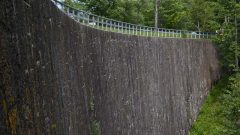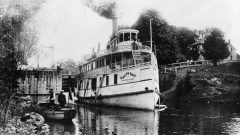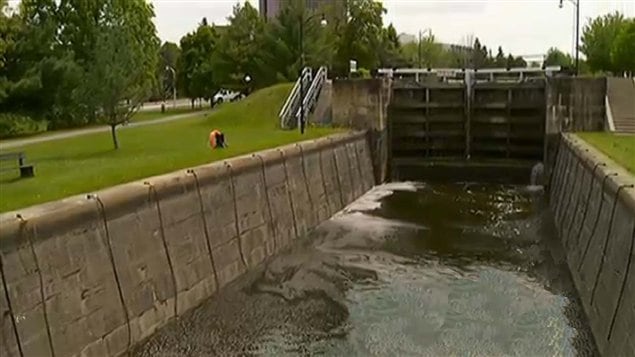On May 29, 1832, Colonel John By arrived in Bytown (what is now the national capital, Ottawa) aboard the steamship/workboat Rideau (aka Pumper) to great fanfare. The occasion was the official opening of the 202-km long Rideau canal, or more accurately Rideau waterway running from Kingston on Lake Ontario, roughly north-east to Ottawa on the Ottawa River.
With its completion Royal Engineer Colonel By had achieved one of the greatest engineering feats in history by creating a navigable route through granite and swamp.
The Rideau canal rises some 83 metres from the Ottawa River to the mid-point on Upper Rideau Lake through 31 locks, and then descends 50 metres to Kingston through 14 locks.
On that official opening trip, at various towns along the route, locals had came out to cheer the procession of boats as they passed. At about the half-way point at the village (now city) of Smiths Falls the locals rather enthusiastically loaded a large, old 18 pounder cannon with an overly ambitious ten pounds of gunpowder, tamped sod into the barrel and lit the fuse.

One of the many amazing engineering feats is the reverse keystone dam at Jones Falls which retains about a 21 metre height of water and has been doing so for over 180 years!. No mortar or cement was used in this dam. The precisely hand chiselled blocks were set in a giant arch, with the pressure of the water behind the dam pushing the perfectly-dressed blocks together, like an arch used in building structures. (photo- Dennis Nazarenko- Wiki) CLICK to enlarge
The resultant celebratory detonation was certainly thrilling to the official party aboard the boats, and to the other spectators on the banks, but definitely not in the intended way.
Instead of noisily firing sod across the water with a billowing cloud of smoke, the cannon blew to pieces sending parts of the barrel hundreds of feet distant.
Fortunately no-one was injured.
Following the war of 1812, the Americans were still deemed to be a threat and the canal was originally designed to be a secure military supply route from Montreal to Kingston to avoid the St Lawrence and its vulnerability to American attack.
It took 6 years and cost 1000 lives to complete, the vast majority of deaths from mosquito-borne malaria, prevalent in the often swampy area at the time.
In the end it was never used militarily but although a longer route from Montreal to Kingston and on to Toronto, it became extremely important commercially and as a route for immigrants to Ontario and points west. This continued for decades as it bypassed the difficult and dangerous rapids on the St Lawrence.

Built in 1893, as the James Swift and renamed Rideau King in 1901, the steamship was one of several that plied the waterway from Kingston to Ottawa carrying passengers and cargo. The ship was scrapped in 1920 The Ridau waned in importance once engineers built a route around the rapids on the StLawrence providing a direct route from Montreal to the Great Lakes. (Phont-Library-Archives-Canada-PA-142355) CLICK to enlarge
Once those rapids on the St Lawrence were tamed through engineering canals bypassing the trouble spots, the Rideau canal’s commercial importance began to wane.
However it has since become a hugely appreciated recreational waterway and is the oldest continuously operated canal system in North America.
Almost all of the locks are completely original and a handful of the original military buildings (blockhouses, smithy, watch house) remain.
In 1925 the “Rideau” was declared a National Historic Site. In 2000, it was named a National Heritage Waterway and in 2007 it was inscribed as a UNESCO World Heritage Site recognizing it as a work of human creative genius.
Operated by the government agency Parks Canada, recent budget cutbacks have resulted in shorter operating hours at the locks, along with concerns about needed repairs and upkeep








For reasons beyond our control, and for an undetermined period of time, our comment section is now closed. However, our social networks remain open to your contributions.